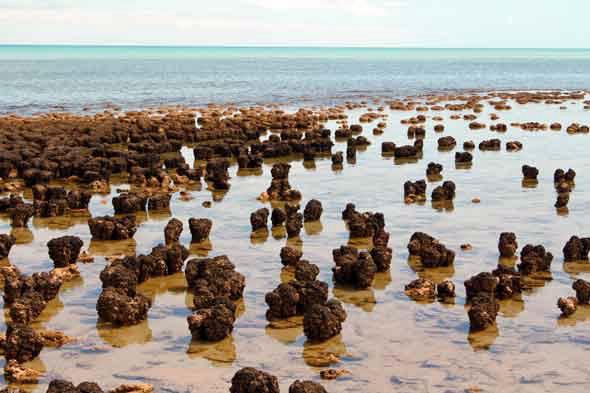

Published on the 3rd August 2016 by ANSTO Staff
Research at ANSTO has helped to reveal insights into a molecular mechanism for harvesting light in extreme conditions. These insights may ultimately lead to previously inaccessible regions of the electromagnetic spectrum becoming available for agricultural production or splitting of water into hydrogen in technological applications of photosynthetic machinery.
Instrument scientist Chris Garvey said SANS was used to measure distances between the membranes of the phycobilisome in a living cyanobacteria, which live in low light conditions and absorb far red light (extreme red in the visible spectrum).
The ability to harvest far red light is important for these organisms as in their habitat it is a predominant source of energy/photons.
“What is really interesting about these organisms is that they can harness an extreme region of the spectrum (red light) and turn it into chemical potential energy,” said Garvey.
It appears the way cyanobacteria might be able to do this is by changing the structure of the phycobilisome complex in response to the environmental conditions.
A difference in the size of the space between thyalkaloid membranes is associated with a new light absorption and energy transfer mechanism enhancing the capture of far red light.
 |
| Novel complementary chromatic acclimation model for H. hongdechloris. Thylakoid membranes with phycoblisomes from WL-grown cells and remodeled thylakoid membranes with red-shifted phycobilisomes from FRL-grown cells. Remodeled red-shifted phycobilisomes mainly consist of an APC core with alternative peptides.WL = white light; FRL = far-red light. |
“Quokka is particularly good at discerning membrane organisation inside living cells. The bumps or peaks in the measurements revealed differences in the spaces between the membranes,” said Garvey.
“The peaks in the angular distribution of scattered neutrons can be converted to distances at the nanometre scale. The membranes are clearly farther apart in white light,” said Garvey.
The structure of the phycobilisome, which is located within the cyanobacterium’s chloroplasts, comprises a series of subunits, or rods attached to a core. The remodelled complex may lack rods.
“We are thinking of ways we might test that,” said Garvey.
Quokka data complemented spectral characterisation, biochemical analyses and imaging using electron microscopy also undertaken in the study.
“There are real experimental advantages in using SANS on Quokka. You can take measurements on a living organism, such as the cyanobacteria, rather than the complex processing of preparing a sample for electron microscopy,” said Garvey, who uses SANS to probe cellular systems.
“We think this approach will become a major area of photosynthesis research—understanding the physiological response to different ambient conditions and in particular the packing of membranes in a cell, measuring distances and linking this to the storage of energy by the cell.”
This particular species of cyanobacteria have an unusual type of chlorophyll known as chlorophyll f that was discovered in stromatolites in coastal Western Australia (see photo above) by one of the paper's co-authors, Prof Min Chen of the University of Sydney.
Prof Chen and collaborators suggested in a paper in Science announcing the discovery, that specific molecular changes to the structure of chlorophyll allowed photosynthetic organisms to survive in almost any environment on Earth.
Chen and collaborators found that cyanobacterium could photosynthesise using light just outside the visible spectrum - at 710nm, in the infrared region —using a modified chlorophyll molecule.
The results of the recent research were recently presented at a conference, Photosynthesis Research for Sustainability 2016, which was held in Russia.
Garvey attended the conference and described to photosynthesis experts how deuteration may complement neutron based techniques for studies of cellular structure and physiology.
Deuteration minimises the hydrogen content of samples, replacing hydrogen with deuterium to improve the information content of the SANS technique.
“Our biodeuteration laboratories can produce deuterated biomass in samples such as algae, the outstanding question is which biomolecules are being deuterated” said Garvey.
The cyanobacteria, Halomicronema hongdechloris, were biodeuterated for neutron scattering experiments on Quokka.
http://dx.doi.org/10.1016/j.bbabio.2015.10.009